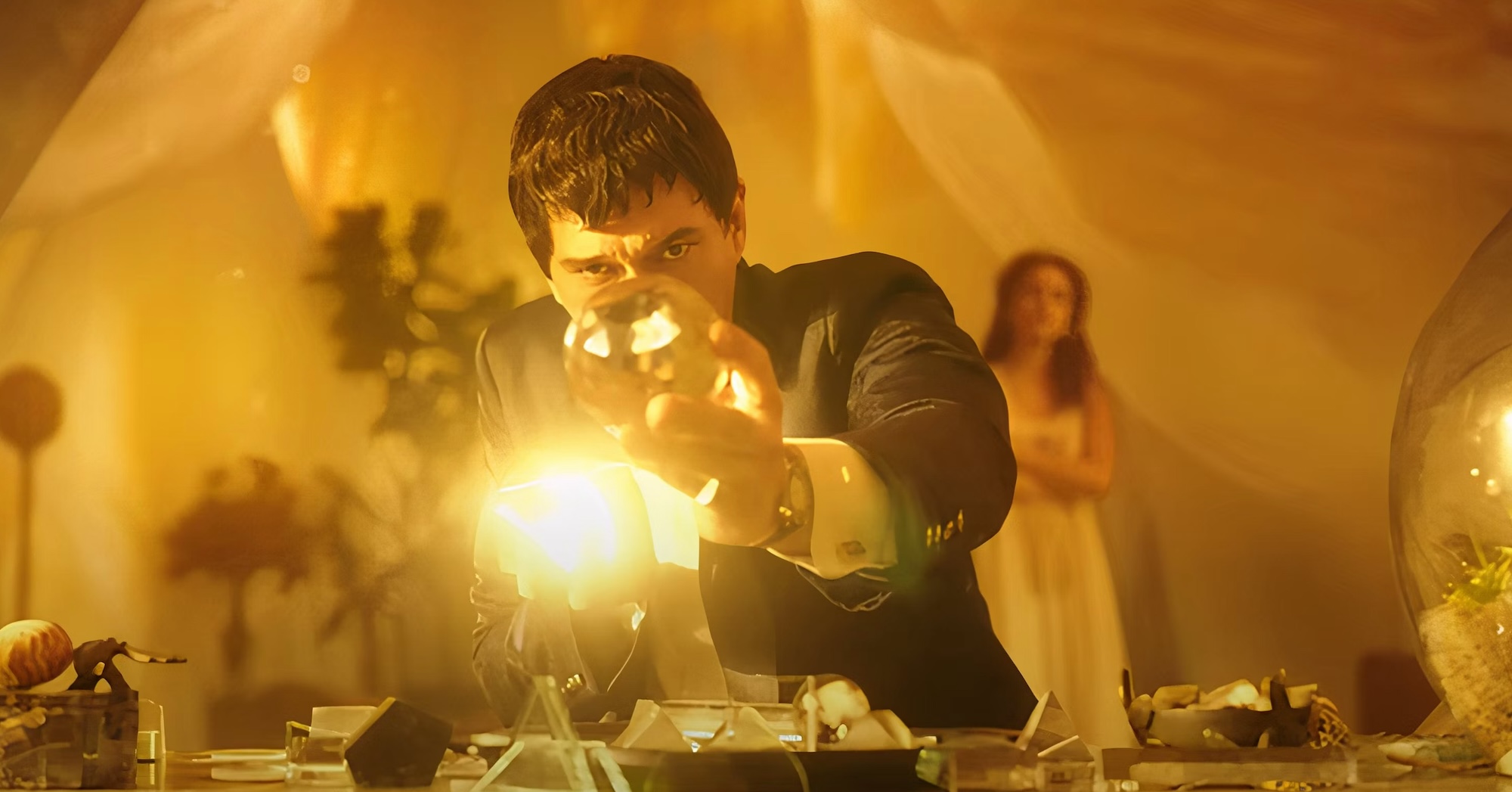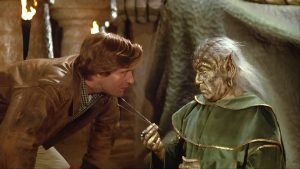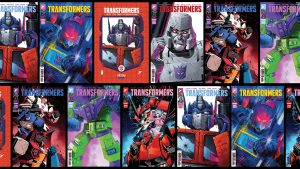
In Francis Ford Coppola’s Megalopolis, there is nothing of greater importance than an artist. As its various characters opine, debate, and brood about to the point of exhaustion, an artist alone has the ability to shape time: a painter freezes it in a moment; an inspired architect conquers it for eternity; and a musician gives it rhythm. Thus in what is most likely Coppola’s final film, as well as a valedictory for a career which helped define cinema as we know it, the central character has the literal ability to pause, rewind, and change time as he sees fit.
Like Megalopolis’ helpful subtitle “A Fable” foretells, this is a movie that does not exist in any particular plane of reality or existence, save for what’s going on inside Coppola’s own mind. And it is there we find a world where Ancient Rome and the modern United States (or at least New York City) exist simultaneously in the same space, and where the sins of the past occur simultaneously in our present and future. Vestal Virgins are social media pop stars, and going to the Colosseum means dining out on literal bread while watching a circus. There’s even a chariot race, if by way of tacky Las Vegas revue show.
It’s an audacious concept that Coppola has been chasing for 40 years. It shows, too. Whether Megalopolis needed more time, which the 85-year-old Coppola simply can no longer afford, or if it had too much of the stuff to begin with is difficult to say. But the Megalopolis Coppola finally got to the screen in the year MMXXIV bears all the hallmarks of an unfinished work—an odd and scattershot collection of half-formed ideas and abandoned roads to nowhere. The detours intermittently contain flashes of brilliance and provocative imagery, but collectively time’s run out to make anything approaching the cohesive brilliance of Coppola’s best movies, or the aesthetic beauty of some of his worst.
Megalopolis is a film where an artist, fairly convinced in the historicity of his own legacy, is defeated by the size of his canvas and ambitions that may exceed this mortal coil (in the film’s New Rome, Shakespeare is of the moment too). Hence, as the hour draws late, we’re left with an easel holding a sketch still waiting for the colors and shading to be applied.
Yet one thing often ignored by pictures as self-regarding to their own individual genius as Megalopolis is that the movies really aren’t just one man’s creation. The greatest auteurs are also great collaborators, and everyone working on this particular film, from the actors to some of Coppola’s most reliable behind-the-camera lieutenants, are trying valiantly to fill in the blanks. They fail to find any rhythm in the cacophony scrawled across the screen, but the dissonance of their efforts, and Coppola’s conflicting ideas, casts some type of spell.
At the center of that sorcery is Cesar Catilina (Adam Driver), a brilliant architect who may or may not have killed his wife, and a visionary with a dream of transforming New Rome City into a utopia he calls “Megalopolis.” It is Cesar who holds the ability to literally manipulate time as he sees fit. Unfortunately, fellow human beings give him a lot more trouble, especially Mayor Cicero (Giancarlo Esposito), the ruler of our fair metropolis who has no interest in reinventing the world, including for the next generation represented by his daughter Julia (Nathalie Emmanuel).
On the surface, you would seem to have a simple narrative about the dreamers fighting against the status quo and big-moneyed conformists. It is even a highly fictionalized retelling of the Catilinarian Conspiracy from Ancient Rome’s republic days, albeit the real Catiline was allegedly the one who wanted to revert Rome to an autocracy, and Cicero the self-described hero of the republic (for a time, anyway). However, the conflict between Driver and Esposito’s Catalina and Cicero is just one of many interlocking subplots.
There is also the jealousies and decadence of Cesar’s cousin Clodio (Shia LaBeouf), a callow libertine who constantly tries to undermine Cesar before taking sudden swerves into modern American populism after he cuts off his rattail and ferments red-hatted mobs who carry a whiff of Jan. 6 about them; Grace VanderWaal’s Vesta Sweetwater is, meanwhile, the aforementioned Vestal Virgin who has publicly sworn a life of celibacy in honor of the divine, but if you know anything about the historical Catiline, you’ll guess where that’s going; and then there’s the best performance in the movie, Aubrey Plaza as the fantastically self-named Wow Platinum, a cross between Joan Rivers and a Fox News-like media personality who is constantly trying to level up in wealth and prestige by marrying old billionaires (Jon Voight). She leaves nary an inch of scenery un-chewed.
There are some nominal concessions made to traditional narrative momentum, most particularly when Emmanuel’s Julia becomes enamored with Cesar much to her father’s disapproval, but the generational conflict between father and prospective son-in-law, with a woman caught in the middle, is as underdeveloped as it is rote. Truthfully, Megalopolis is not a movie concerned with much in the way of plotting. What thin storyline there is comes courtesy of a repetitive voiceover provided by Coppola favorite Laurence Fishburne, whose smooth baritone does its best to thread together the incongruent scenes and vignettes.
No, Coppola’s real interest derives from finally breathing in his Roman-Americana hybrid fantasia, and asking audiences to interact with that space—quite literally so when my audience applauded in its IMAX theater after an in-person performer asked Adam Driver a question, and the charactero n the screen answered at length. (You will apparently get that treatment in non-IMAX screenings.)
It’s a bold undertaking, yet only fitfully engaging. There are true moments of true inspiration though: this version of New York is littered with Greco-Roman statues of faded splendor that move, and limp, and sigh, as they struggle against the loss of our idealism. At other times, Coppola conjures up the old school magic tricks that made Bram Stoker’s Dracula such a visual marvel, like when a ghostly cloud, shaped as a hand, wraps its fingers around a full moon.
By and large, however, Megalopolis is a visually tepid movie that relies on far too much blue-screen and CGI to ever feel lived in, or enchantingly artificial like Dracula or One from the Heart. Rather the film frequently looks like what it is: actors standing on a soundstage in front of an airless vacuum and pretending to be awed. Given the director’s frequent pronouncements of disdain for superhero movies, it’s striking how many scenes of Megalopolis visually echo the flatness of a Marvel movie, or for that matter how the director lets LaBeouf mug so much as the villainous Claudio that he inadvertently resembles all those ‘90s actors trying to imitate Jack Nicholson’s Batman performance, complete with a sequence of LaBeouf scheming before a skyline about “wait until this city get a load of me.”
The other, more intentional cinematic touchstones are common and occasionally evocative: a submerged woman’s hair floats like poor Shelley Winters in The Night of the Hunter; the RKO Pictures logo is recreated in second-unit photography; and Plaza’s fantastic performance as Wow takes on a German Expressionist twist as the silhouettes of her fingers literally push the men in her life in the directions she wants, reminiscent of a femme fatale Max Schreck.
But as good as Plaza is, she also appears to be in a different movie from LaBeouf’s more basic hamminess, or Driver and Emmanuel’s ostensibly measured and stately turns as the leads. Ultimately, it would seem all the actors were left to their own devices, with the performances failing to complement or compound into something coherent. It’s a bit like watching high schoolers perform a play they don’t fully understand. But that’s perhaps not fair. Only Coppola understands the frequency this is supposed to take place in. For everyone else involved, it might be like if aliens landed and made first contact at Summerstock… and then agreed to perform Our Town. It’s uneven, uninvolving, and unbelievable, but you’re still impressed they made the effort.
During the New York Film Festival screening of Megalopolis that I attended, Coppola and an on-hand Robert De Niro revealed they almost made a version of this movie back in 1996, even going so far as doing a script reading with The Godfather, Part II actor and other colleagues like Paul Newman and Uma Thurman. I cannot help but wonder if that would have been a better moment for Coppola to make this, for even in the ‘90s he was still at the height of his visual dynamism as demonstrated by Dracula, and could still tell an effective story with ease (see: The Rainmaker).
As it is now, I’m reminded of an early scene in Megalopolis that featured both Voight and Dustin Hoffman, two New Hollywood legends who co-starred in the landmark Midnight Cowboy. Seeing Joe Buck and Ratso Rizzo in the same scene again should have been an event, yet they’re never in the same frame (or perhaps on the same set). And both look exceedingly tired when they do appear, watching slack-jawed while Adam Driver inexplicably performs the “To Be or Not to Be” soliloquy from Hamlet in its totality. That speech also is about the mind grappling with the crushing weight of mortality. But in Hamlet, Shakespeare finds an answer to that great question: to exist or to not? I’m not convinced Megalopolis ever does.
Megalopolis opens in theaters on Friday, Sept. 27.
The post Megalopolis Review: Francis Ford Coppola Rages Against Time appeared first on Den of Geek.






